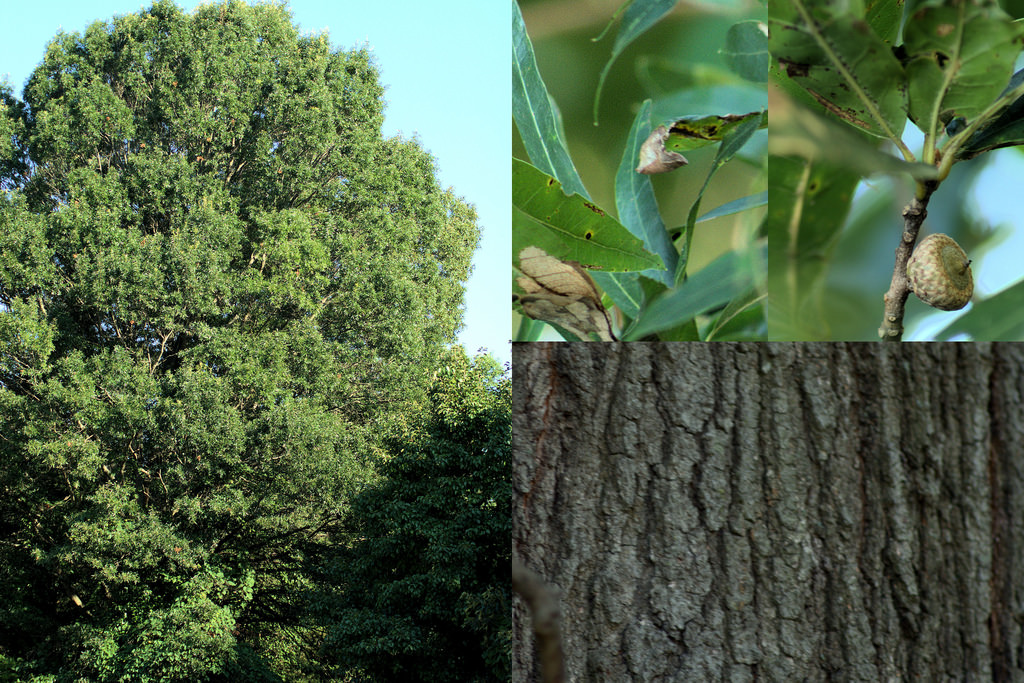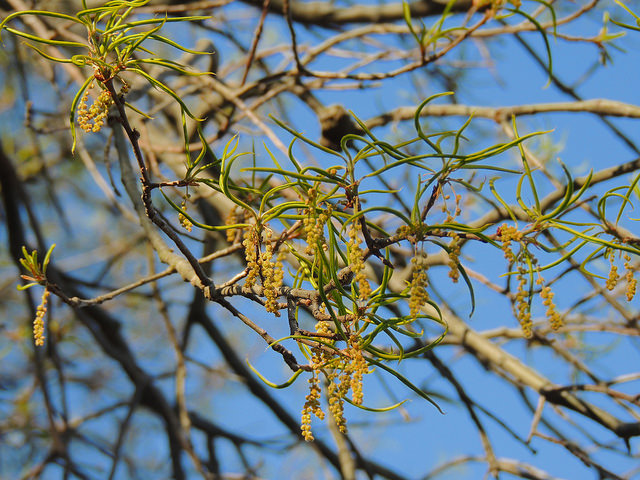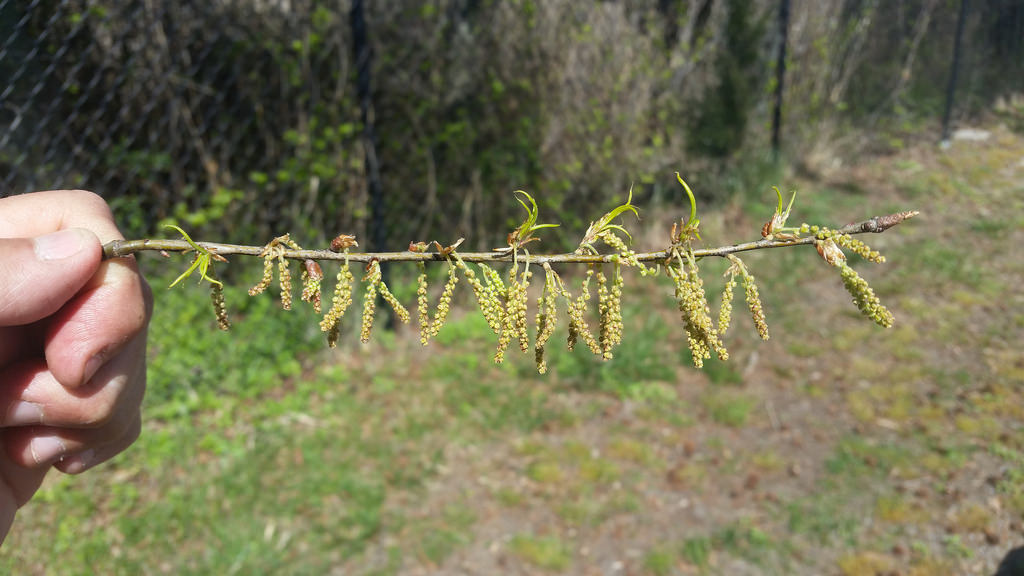Map Snapshot





















613 Records
Status
A member of the Red Oak Group with narrow, entire leaves having bristle tips. Willow oak occurs on the Atlantic and Gulf coastal plains from New Jersey and southeastern Pennsylvania to Georgia and northern Florida; west to east Texas; and north in the Mississippi River valley to southern and lower midwestern states.
Description
Common on Maryland's Coastal Plain but planted as an ornamental tree outside the Coastal Plain. Grows in well-drained floodplain forests, swamps, flatwoods, and ponds. Also in mesic upland forests and early-successional forests.
Where To Find
Look in well-drained Coastal Plain forests and damp areas.
Seasonality Snapshot
Source: Wikipedia
| Willow oak | |
|---|---|

| |
| Quercus phellos in Mississippi, United States | |
| Scientific classification | |
| Kingdom: | Plantae |
| Clade: | Tracheophytes |
| Clade: | Angiosperms |
| Clade: | Eudicots |
| Clade: | Rosids |
| Order: | Fagales |
| Family: | Fagaceae |
| Genus: | Quercus |
| Subgenus: | Quercus subg. Quercus |
| Section: | Quercus sect. Lobatae |
| Species: | Q. phellos
|
| Binomial name | |
| Quercus phellos | |

| |
Quercus phellos, the willow oak, is a North American species of a deciduous tree in the red oak group of oaks. It is native to the south-central and eastern United States.
Description
[edit]It is a medium-sized tree growing to 20–30 meters (65–100 feet) tall (exceptionally to 39 m, 128 ft), with a trunk up to 1–1.5 m (3+1⁄2–5 ft) in diameter (exceptionally 2 m or 6+1⁄2 ft). It is distinguished from most other oaks by its leaves, which are shaped like willow leaves, 5–12 centimeters (2–4+3⁄4 inches) long and 1–2.5 cm (3⁄8–1 in) broad with an entire (untoothed and unlobed) margin; they are bright green above, paler beneath, usually hairless but sometimes downy beneath. The fruit is an acorn, 8–12 millimeters (5⁄16–15⁄32 in) long, and almost as wide as long, with a shallow cup; it is one of the most prolific producers of acorns.[2] The tree starts acorn production around 15 years of age, earlier than many oak species.[3]

Willow oaks can grow moderately fast (height growth up to 60 cm or 2 ft a year), and tend to be conic to oblong when young, rounding out and gaining girth at maturity (i.e. more than 50 years).[citation needed]
Distribution and habitat
[edit]The species is most common in the American south and eastern states.[4] It can be found from Long Island Sound south to northern Florida, and west to southernmost Illinois, Missouri, Oklahoma, and eastern Texas.[5] Its natural range extends into southeastern Pennsylvania and southern New Jersey. It has also historically been recorded as occurring in Lancaster, Bucks, Chester, Delaware, and Philadelphia counties, chiefly on wet sites, occasionally in drier, upland ones.[6] Much of that area has been built over and developed since World War II, and the tree is now classified as endangered in the state.
It is most commonly found growing on lowland floodplains, often along streams, but rarely also in uplands with poor drainage, up to 400 m (1,300 ft) in altitude.
Ecology
[edit]The acorns are eaten by squirrels and other wildlife.[2]
Uses
[edit]Economic uses are primarily as an ornamental tree and the wood for pulp and paper production, but also for lumber; it is often marketed as "red oak" wood.[citation needed]
The willow oak is one of the most popular trees for horticultural planting, due to its rapid growth, hardiness, balance between axial and radial dominance, ability to withstand both sun and shade, light green leaf color and full crown. Despite being heavily used in landscaping in the Southern US (in cities such as Washington, D.C., Raleigh, Charlotte, and Atlanta) around malls, along roads, etc., the trees tend to grow larger than planners expect, which often leads to cracked sidewalks.[citation needed]
References
[edit]- ^ Wenzell, K.; Kenny, L. (2015). "Quercus phellos". IUCN Red List of Threatened Species. 2015: e.T194220A2304635. doi:10.2305/IUCN.UK.2015-4.RLTS.T194220A2304635.en. Retrieved 12 November 2021.
- ^ a b Little, Elbert L. (1980). The Audubon Society Field Guide to North American Trees: Eastern Region. New York: Knopf. p. 405. ISBN 0-394-50760-6.
- ^ Nixon, Kevin C. (1997). "Quercus phellos". In Flora of North America Editorial Committee (ed.). Flora of North America North of Mexico (FNA). Vol. 3. New York and Oxford: Oxford University Press – via eFloras.org, Missouri Botanical Garden, St. Louis, MO & Harvard University Herbaria, Cambridge, MA.
- ^ "Quercus phellos". fs.fed.us. p. 1. Retrieved 21 July 2019.
- ^ "Quercus phellos". County-level distribution map from the North American Plant Atlas (NAPA). Biota of North America Program (BONAP). 2014.
- ^ Illick, Joseph (1928), Pennsylvania Trees.
- Schlaegel, Bryce E. (1990). "Quercus phellos". In Burns, Russell M.; Honkala, Barbara H. (eds.). Hardwoods. Silvics of North America. Vol. 2. Washington, D.C.: United States Forest Service (USFS), United States Department of Agriculture (USDA) – via Southern Research Station.






















